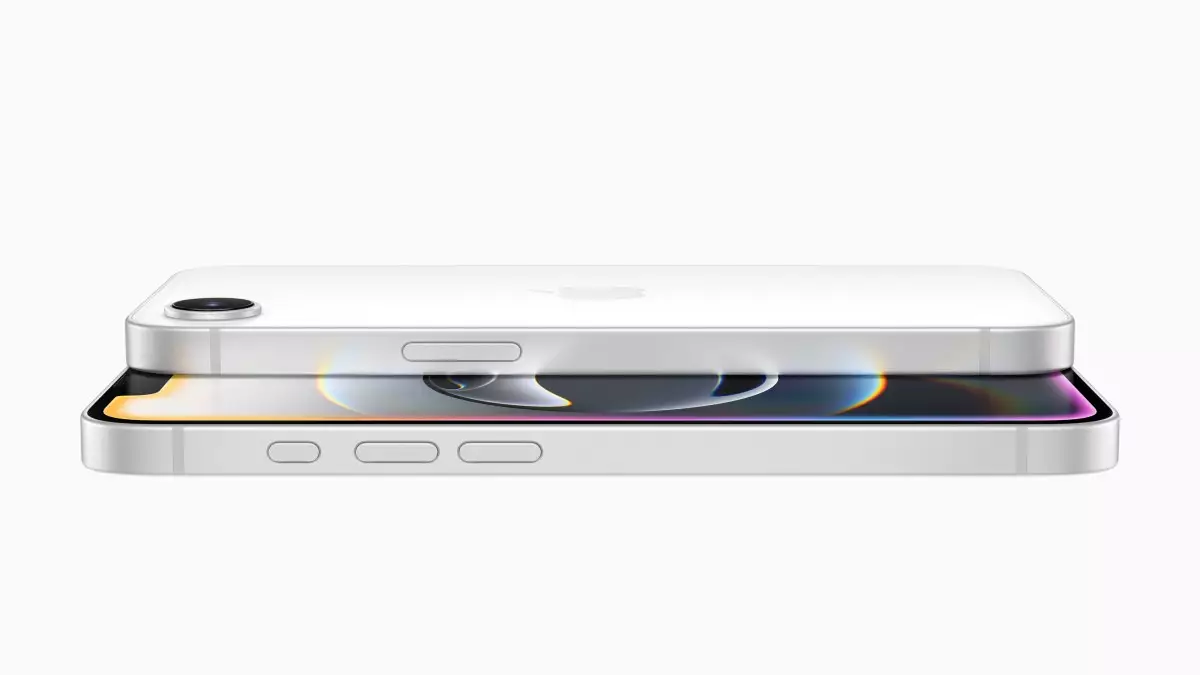Apple has once again shifted its strategy within the smartphone market with the unveiling of the iPhone 16e, a device that marks the fourth generation of its budget offerings. This launch, occurring on a Tuesday in late February, transcends the usual model updates and repositions Apple’s entry-level smartphone to better align with the company’s flagship devices. The decision to drop the “SE” branding reflects a strategic shift that could signal a newfound focus on unifying the brand’s identity across different price points.
The iPhone 16e, priced at $599, enters a competitive landscape that has evolved considerably since the last iteration of the SE line. By shedding the SE name, Apple appears to be making a concerted effort to elevate this model within its hierarchy of products. This move conveys a message that even their budget phones can provide premium experiences, echoing their flagship line’s ethos. The expectation is that customers seeking value will also embrace the innovative features the iPhone 16e offers, positioning it not just as an affordable option, but as a capable device in its own right.
One of the standout features of the iPhone 16e is the implementation of Apple Intelligence, which represents the company’s effort to enter the generative AI sphere. The ability to run lightweight AI applications locally on the device—functions such as crafting text or generating images—places Apple in direct competition with tech giants like OpenAI and Google. This strategic addition is important as it allows users to manipulate AI tools without requiring a separate account, thus increasing accessibility and encouraging usage among iPhone users.
Advanced Hardware and Design Choices
Powering the iPhone 16e is the advanced A18 processor, which has become synonymous with Apple’s current leadership in smartphone technology. Not only does this chip improve performance significantly, but it also aids in battery efficiency, punctuating Apple’s claim that this model provides the best battery life for any device with a 6.1-inch display. The device boasts a larger OLED screen, stepping up from the previous generation’s 4.8-inch display, which is a notable shift for those who prefer a more spacious viewing experience.
Moreover, the transition from the traditional Touch ID to Face ID marks a significant design change, aligning the iPhone 16e more closely with its flagship counterparts. The introduction of USB-C, replacing the Lightning port, is a move towards standardization across Apple’s product ecosystem, indicating a potential simplification for users who juggle multiple devices.
The camera system likewise reflects Apple’s innovation strategy. With a 48-megapixel rear-facing camera capable of 2x zoom, along with a unique “two-in-one” capability allowing for 24-megapixel images, the iPhone 16e seems intent on appealing to photography enthusiasts who desire high-quality shots without investing in a premium device.
The timing of this release is crucial for Apple, especially as the company faces tense competition in significant markets like China. With an 11% decline in market share attributed partly to emerging domestic brands like Huawei, the iPhone 16e’s introduction is a strategic response. Apple’s efforts to collaborate with local firms such as Tencent and Alibaba underscore its intent to localize products effectively and counteract potential setbacks.
While the jump in price from the last SE model may be steep, the iPhone 16e is being presented as a more sophisticated choice for consumers looking for versatility and modern features. Apple appears to be gambling that these enhancements will enable it to recover lost market share and solidify its presence in emerging markets, where affordability mixed with quality remains key.
With the launch of the iPhone 16e, Apple has signaled an aspiration to bridge the divide between budget and flagship smartphones, reinforcing its commitment to innovation across all tiers of its product lineup. Whether this reassessment will resonate positively with consumers, especially in price-sensitive markets, remains to be seen. However, the enhancements presented within the iPhone 16e—paired with Apple’s calculated marketing strategies—suggest that the company is positioning itself to capture both the budget-conscious and the tech-savvy consumer alike. As pre-orders open on February 21 and shipping commences a week later, all eyes will be on whether Apple can regain its dominance in the smartphone marketplace with this ambitious new model.

